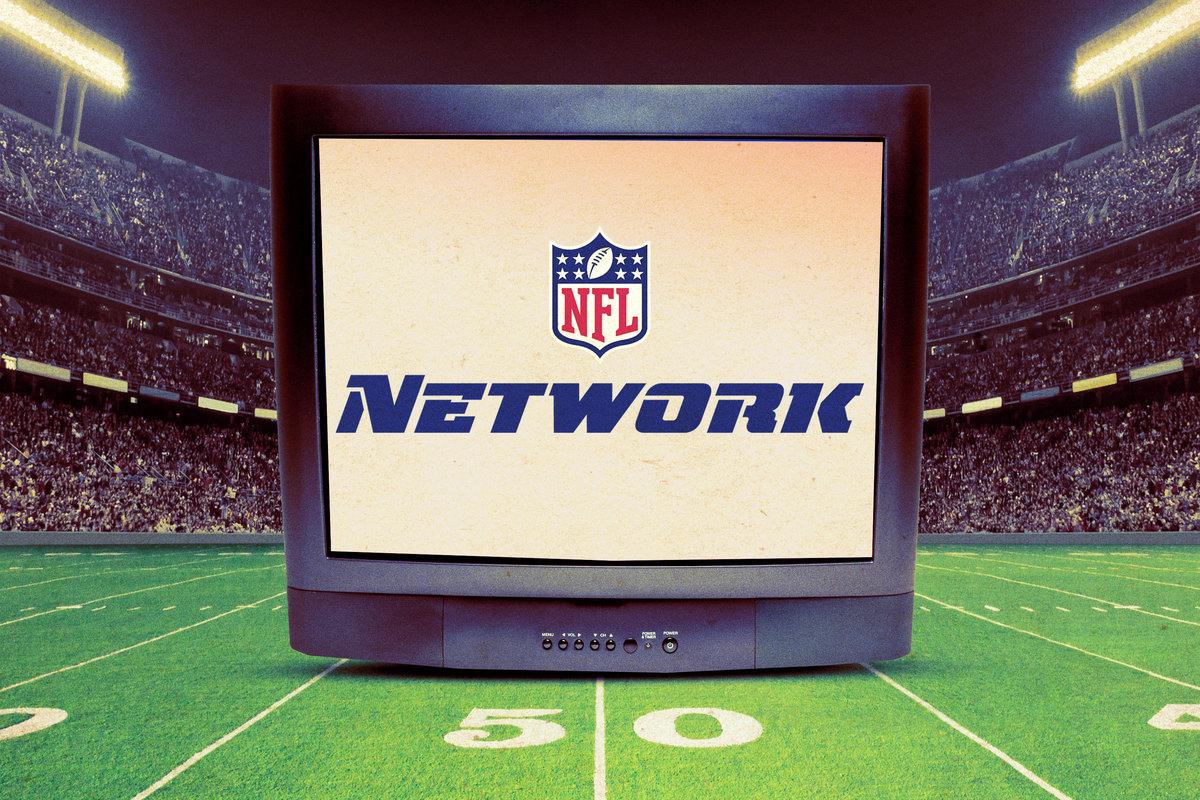
The creators of the NFL Network, of all people, knew that the release of the league’s annual schedule wasn’t exactly an episode of Friends. “The schedule-release show is essentially the celebration of paperwork,” said anchor Rich Eisen. Any NFL fan can tell you who their favorite team is playing next season. They can tell you whether the games will be at home or on the road. In a two-hour special that first aired on April 14, 2004, the NFL Network proposed to reveal only when the games would happen.
Steve Bornstein, the NFL Network’s first president and CEO, had held the same titles at ESPN. He knew how his former colleagues would react when they saw that a competitor had a new show about ESPN’s favorite sport. Sure enough, three years later, ESPN aired its own two-hour celebration of paperwork in prime time. This past May, ESPN produced two separate schedule-release shows, for TV and its app.
After it was founded 20 years ago this week, the NFL Network became a place where Eisen had his second act after hosting SportsCenter; where Good Morning Football and Nate Burleson’s TV career were launched; where Michael Irvin enjoyed his eighth and ninth lives in TV. But as a league-owned network, the NFL Network’s biggest legacy may be its unusual approach to competition.
Let’s say two sports networks launched competing shows. Normally, Network A would want 100 percent of viewers to watch its show instead of Network B’s. The NFL Network was different. If ESPN muscled in on the schedule release, that pleased the network’s founders. Because now another media company was talking about the NFL in the exact offseason-expanding terms the league wanted. Today, every sports network, and just about every sports podcast and website (including this one), has followed the NFL Network’s road map, celebrating the league’s high holidays, chewing on story lines, and advertising football all the time.
Bornstein was an ideal executive to carry out the NFL Network’s mission. He’d worked at ESPN during its lean, early years, when the network filled its programming void with Australian rules football. But Bornstein also understood how the NFL had transformed ESPN. He was there when ESPN aired its first NFL games in 1987. He hired Chris Mortensen as a news breaker. He came to call NFL programming ESPN’s “crack cocaine.”
When the NFL brought its network on the air in 2003, the league had a few different goals. It wanted a chunk of the still-lucrative cable bundle. The NFL wanted a platform in case it might someday televise its own games. And in a universe dominated by ESPN and newspapers and sports radio, the NFL wanted to cover itself year-round. Given the popularity of football, Bornstein figured he only needed to nudge other networks to get them to follow. “That was not only predictable and anticipated,” said Bornstein. “It would’ve been shocking if they hadn’t.”
The schedule-release show was the network’s first coup. “We used to honestly put the schedule out on some random Tuesday in April by 5 so that USA Today could print the whole thing by the next day,” said Bornstein. Now, the release was a TV event … of some kind. On the first show, analyst Ken Norton Jr. proclaimed, “That is quite a schedule.”
Print media types never figured out why they were covering the schedule release. They never figured out why it deserved such treatment. That hardly mattered. ESPN matched the NFL Network’s coverage, and reporters and radio hosts and podcasters matched ESPN’s. “We sort of made it into an event and then made other people care about it,” said Brian Rolapp, the chief media and business officer of the NFL. “And then when other people cared about it, it kind of took on a life of its own.” This year, schedule-release goodies were doled out on four different news morning shows, from Good Morning America to Fox & Friends.
In 2006, the NFL Network cast its eyes on the draft. Though it had been shown on ESPN since 1980, a lot of sportswriters thought of draft nerdery as something of a niche interest. “The draft is essentially a convention for the reading of names on a list,” said Eisen. NFL Network rolled out its own coverage, with Eisen in the host role traditionally occupied by Chris Berman on ESPN, and Mike Mayock as the Mel Kiper Jr.–style guru.
“I don’t want to say it kept ESPN honest,” said Rolapp. “But it certainly got them competitive.” Over the next two decades, ESPN poured more resources into covering the draft; it now airs on separate telecasts on ESPN and ABC. In 2010, Bornstein’s suggestion to move the start of the draft from Saturday afternoon to a Thursday slot in prime time made it even bigger. Now, Rolapp compares the draft to a political convention. If more networks show the draft, and more people offer competing takes, that will compel viewers to watch.
In 2004, the network hired Adam Schefter from The Denver Post as its in-house insider. “He was born in our little lab of NFL Network,” said Rolapp. Mortensen and The Boston Globe’s Will McDonough had gotten reps on TV before. But Schefter had the run of a network that had no other sports to talk about. Soon, Schefter could post his scoops on social media.
In 2009, ESPN hired Schefter. He and Mortensen—for the first and perhaps only time in the history of insiderdom—joined forces to rule the NFL scoop world together. “It was a sad day when he left us and it was a great day when he left us,” Bornstein said of Schefter. “Because he stepped into yet an even bigger platform.” With his BlackBerry attached to ESPN’s fire hose, Schefter’s scoops raised the metabolism of the entire media’s NFL coverage and helped make it year-round like the league wanted. Meanwhile, the NFL Network reloaded with reporters like Ian Rapoport and Tom Pelissero.
Again and again, the NFL Network watched other outlets pilfer from its lab. In 2021, CBS hired Good Morning Football’s Nate Burleson to host its weekday morning news show. In 2003, when Michael Strahan was playing for the Giants, he had an NFL Total Access segment every Thursday with Warren Sapp. Now, Strahan hosts a network morning show, too. (This year, when Burleson’s and Strahan’s shows received nuggets from the schedule release, the network’s gestational cycle was complete.) In 2005, Mike Pereira, the league’s vice president of officiating, had his own weekly Total Access segment. Soon, Pereira and other ex-refs became a feature of every NFL “A” broadcasting team.
According to Rolapp, the network was usually happy to loan out its announcers. Eisen can do The Rich Eisen Show on Roku, Irvin can appear on FS1’s Undisputed, and Kurt Warner can call Monday Night Football games for Westwood One radio. “Our view was always, well, the more you’re out there promoting football, the more you’re out there promoting the NFL and NFL Network, that’s a good thing,” said Rolapp.
Sometimes, the NFL Network took events that existed on the periphery of the national media calendar and made them feel more coverable. It put more muscle into free agency, training camp, and the preseason. In 2004, the network started covering the scouting combine. Today, a lot of reporters’ combine coverage amounts to tweeting clips of huge linemen running the 40. But what was important, for the league’s purposes, is that the combine has become yet another offseason event that encourages media people to talk about the NFL. Eisen remembers a SportsCenter production meeting in late March 2003, shortly before he left ESPN, when someone proposed a draft segment about cornerback-needy teams. The idea was laughed off because there was baseball and the NCAA men’s basketball tournament to discuss. Now, most outlets start with the cornerback angle and see whether they have bandwidth left for baseball.
The most lucrative idea hatched at the NFL Network was the modern version of Thursday Night Football. In 2006, it started as an eight-game, cable-only schedule, with the mostly forgotten announcing team of Bryant Gumbel, Cris Collinsworth, and Schefter on the sidelines. Beginning in 2014, the league sold the broadcast rights for Thursday games to three different networks. In 2021, the league sold the package of games to Amazon for around $1 billion a year.
In their bid to shape the media universe, the NFL Network’s founders had big advantages. They had hold of the country’s most popular sport. Networks owned or co-owned by Major League Baseball, the NBA, and the NHL haven’t used the cover-it-and-others-will-follow gambit nearly as successfully.
The founders were also standing at the edge of an era in which pro football would become one of the few things on TV that viewers watched live. Last year, “82 of the 100 most-watched programs on TV” were NFL games, according to Sportico. It’s likely sportswriters would have started talking NFL year-round even if the league’s media arm never existed. The NFL Network sped up the process.
At the Super Bowl in 2004, the NFL Network wasn’t yet three months old. It was still trying to prove it existed. Bornstein put the network on every spare TV set in the host city, Houston. He had a big stage erected in the middle of Radio Row. Every night, Eisen welcomed guests like Bill Belichick and Peyton Manning and Steve McNair.
“One day in,” said Eisen, “I looked up and I saw two of my former ESPN colleagues goal-hanging on our set to try and cherry-pick our guests as soon as we were done.” It was a harbinger of things to come. Twenty years later, the best way to think of the NFL Network is as a cable channel that became an assignment editor.


